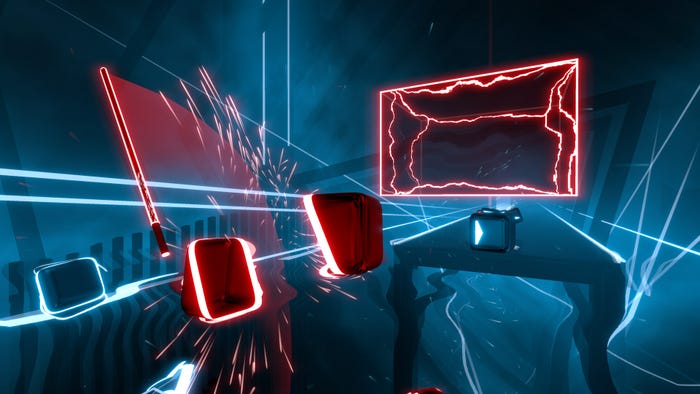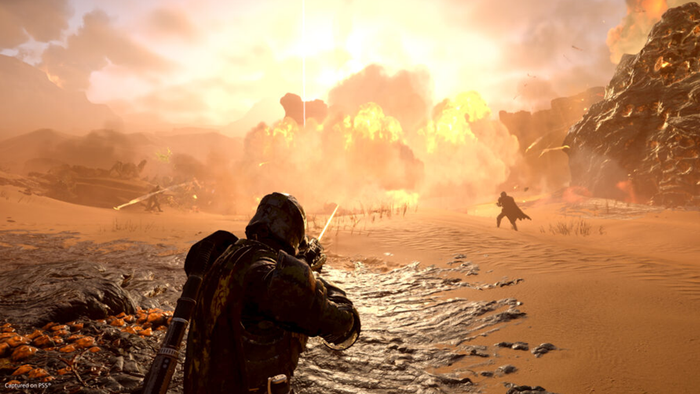
Featured Blog | This community-written post highlights the best of what the game industry has to offer. Read more like it on the Game Developer Blogs.
Gamification, where did the games go?
We need to start thinking beyond merely adding a layer based on extrinsic motivators with gamification and look more closely at what makes games interesting and learn from it.

Originally appeared on: www.ludicity.nl
Often there appears to be a disproportionate focus on the possible results of gamification. It is lauded as an innovative solution which can show juicy results like strong user retention and high conversion rates. And how to get to those juicy bits? Well, by using elements of games of course, i.e. badges, achievements, leaderboards, points and levels; that’s what games are about, right? However, due to this perspective the accent moved even stronger towards a marketing focus and a process of easy and repeatable ‘-ification’ without actually taking in regards on how to perform this, where to take the inspiration from and the extensive resource of possibilities: the games. They were taken for granted.
Where did the games go to? We need to start thinking beyond the badges and beyond merely adding a layer based on extrinsic motivators. We should look more closely at what makes (specific) games interesting and learn from them. We can use this knowledge to build entire structures and contexts, rather than adding a layer of icing.
Let’s take an example and see what it offers us. I will keep it brief just to illustrate the purpose and potential. If there are signs that there is a further interest in such analyses I will extend upon these and provide other examples.

Faster Than Light and Gamification
Faster Than Light (FTL). FTL is a recently released game in which you have to run a spaceship, strategically battle other spaceships and do other various missions as you come across them. In the words of the developer:
We wanted a game where we had to manage the crew, fix the engines, reroute power to shields, target the enemy life support, and then figure out how to repel the boarders that just transported over!
It’s a relatively simple game, but it is challenging (due to its roguelike nature) and received wide acclaim. What does it offer then that makes it interesting to analyze?
Let’s take a look at a single aspect at the very beginning of the game: choosing a spaceship. You have limited choices at the beginning, but as you play through you unlock different ships. It is then already important to note that this process of unlocking ships does not result in unlocking stronger ships, but you rather unlock different ships which offer you different play styles. This is more commonly referred to as attaining ‘sidegrades’ compared to ‘upgrades’. This keeps the initial goal of the game, to provide a challenge, healthy. Games are a lot about balance. Balancing the rewards you gain and the options you have against the challenges you encounter and what kind of experience the game should provide makes or breaks a game. It is then not even important that the game you analyze is successful or well designed or not. Bad games may offer even more valuable insights good games cannot give. Continuing such an analysis you could also take a look at the narrative structure or reward structures of the game. For instance at how choices are dynamically implemented or what kind of rewards are given out and how they incentivize certain courses of action.

Faster Than Light and Gamification
By doing such analyses you can uncover certain principles which are applicable to gamification processes. In the example above the aspect of balance in regards to upgrades and sidegrades was illustrated. This can inform decisions you make for your design and how you want to reward users to keep them engaged. When do you want to offer them upgrades and when sidegrades? How does the environment that is interacted with respond to such rewards? Does it get increasingly more difficult or do you want to make the user feel extra powerful? How does this reflect social status in a community? And so on.
We should not lose track of our source of inspiration when applying gamification. The games industry is always evolving and has done so already for decades. Not appreciating this and making use of it would mean turning a blind eye towards a great resource which is right out there for grabs and can be used to continuously lift gamification to new heights. Just take a look around, try a couple of games and get inspired.
Read more about:
Featured BlogsAbout the Author(s)
You May Also Like













